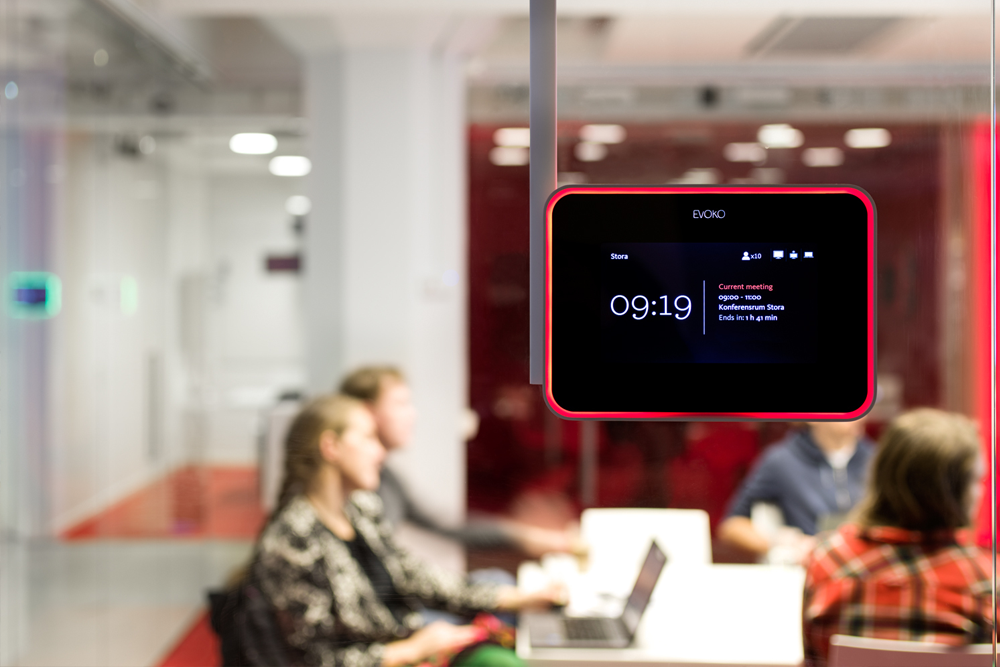
By Marty Wilson
After months of quarantine and self-isolation due to COVID-19, it’s evident that working from home is no longer an experiment. It’s an increasingly viable reality for many companies. Across the country, organizations and their newly remote teams have remained focused and kept productivity up, finding innovative ways to communicate, collaborate and serve customer and client needs with minimal disruption. But as conversations around workplace re-entry and the physical office return to the fore, business leaders are faced with a new challenge: implementing technology solutions that will aid the expansion and effectiveness of the distributed workforce.
Here are a few tips, tools and products to consider to meet the evolving technology needs of your employees, businesses and other important audiences.
Mobile presentation screens. As organizations begin implementing office design and layout changes to accommodate increased social distancing, we anticipate that conference rooms and presentation spaces will emerge out in the open to allow for greater engagement. Ultimately, this will lead to the need for larger display monitors with smart integrated technology, like mobile Avocor units, to make it easier to connect and participate from disparate locations.
Over the coming months, mobile collaboration and these types of meeting devices will play an outsized role, seamlessly connecting a corporate headquarters with employees or clients in different locations.
Smart rooms. While video conferencing tools like Zoom and Microsoft Teams have offered quick and commendable meeting solutions, other new technologies are better positioned to adapt to long-term distributed workforce needs.
Huddle Room Technologies (HRT), for example, provides the ability to create smart rooms, allowing individuals to share what is on their screen with others in the same facility. Think of it as a room without physical barriers.
As opposed to Zoom, Microsoft Teams or other platforms, HRT’s quality and reliability is better suited for in-person meetings. Rather than connecting to the cloud and the back to the desktop (which inherently causes latency with an individual’s audio and video), HRT provides more seamless wireless sharing. The product’s “Smart Rooms” can even be reserved for specific huddle spaces, teams, projects or single users.
Electronic room schedulers. With greater social distancing and fewer employees allowed to occupy existing meeting space, it will be critical that conference rooms, huddle room and breakout areas are monitored regularly. Additionally, if organizations intend to manage workstation occupancy or “heads down” space, they’ll need tools to do so.
Electronic room schedulers such as Crestron room scheduling, or teem and AppSpace can make it easy for employees to reserve a conference room, flex space or workstation other than their own. Most room schedulers can be integrated with Microsoft Office 365 or another application-based system and should be hands free, making it easier for employees to reserve space when they’re in the office.
Noise cancelling headphones. If working from home has revealed anything, it’s the value of increased privacy and heads down work time. As a result, noise cancelling headphones are likely to become a must-have amenity – especially in offices that are designed with an open floorplan.
Brands like Bose, Sony, Beats by Dre and Cowin sell highly rated noise canceling headphones, giving employees at the office more peace and quiet, allowing them to maintain the undisrupted productivity they experienced when they were at home.
Occupancy sensors. Occupancy sensors, or tools that monitor the activity in a designed space, were a much-debated topic prior to the COVID-19 pandemic. Although privacy remains an important consideration, occupancy sensors are far less invasive than wellness checks and can still provide organizational leadership and property management teams with peace of mind that their spaces are not over-occupied. These tools also provide room utilization data, which can help inform design shifts, cleaning
schedules and help maximize tenant improvement budgets in the future.
We’d recommend products and solutions that provide quantitative data and analytics to support better use of organization resources. Examples include Crestron Xio Cloud and Mersive Technologies Solstice Cloud, which incorporate useful information to help decision makers optimize the use of spaces and technology.
Electronic signage and wayfinding. Electronic signage and wayfinding solutions are one of the easiest ways to guide people’s behavior and travel paths in and around the office. This is especially important as the distributed workforce get more comfortable with the idea of returning to work.
If you haven’t done so already, consider how your existing technology – TVs, elevator monitors or large-format video displays, for example – can proactively communicate important safety and wayfinding messaging while allowing visitors to feel confident that social distancing guidelines are being followed.
Although many of these concepts and technologies have existed for some time, each will play an important role in supporting future workplace needs. This is especially true for organizations that maintain both an in-office and distributed workforce presence.
And as the traditional definition of “work” continues to evolve, so too must the ways in which we create a safe and fulfilling environment for our employees while ensuring our customers and clients feel appreciated and cared for.
Marty Wilson is the director of technology integration at Workplace ELEMENTS, a full-service provider of furniture and architectural products based here in Denver.









